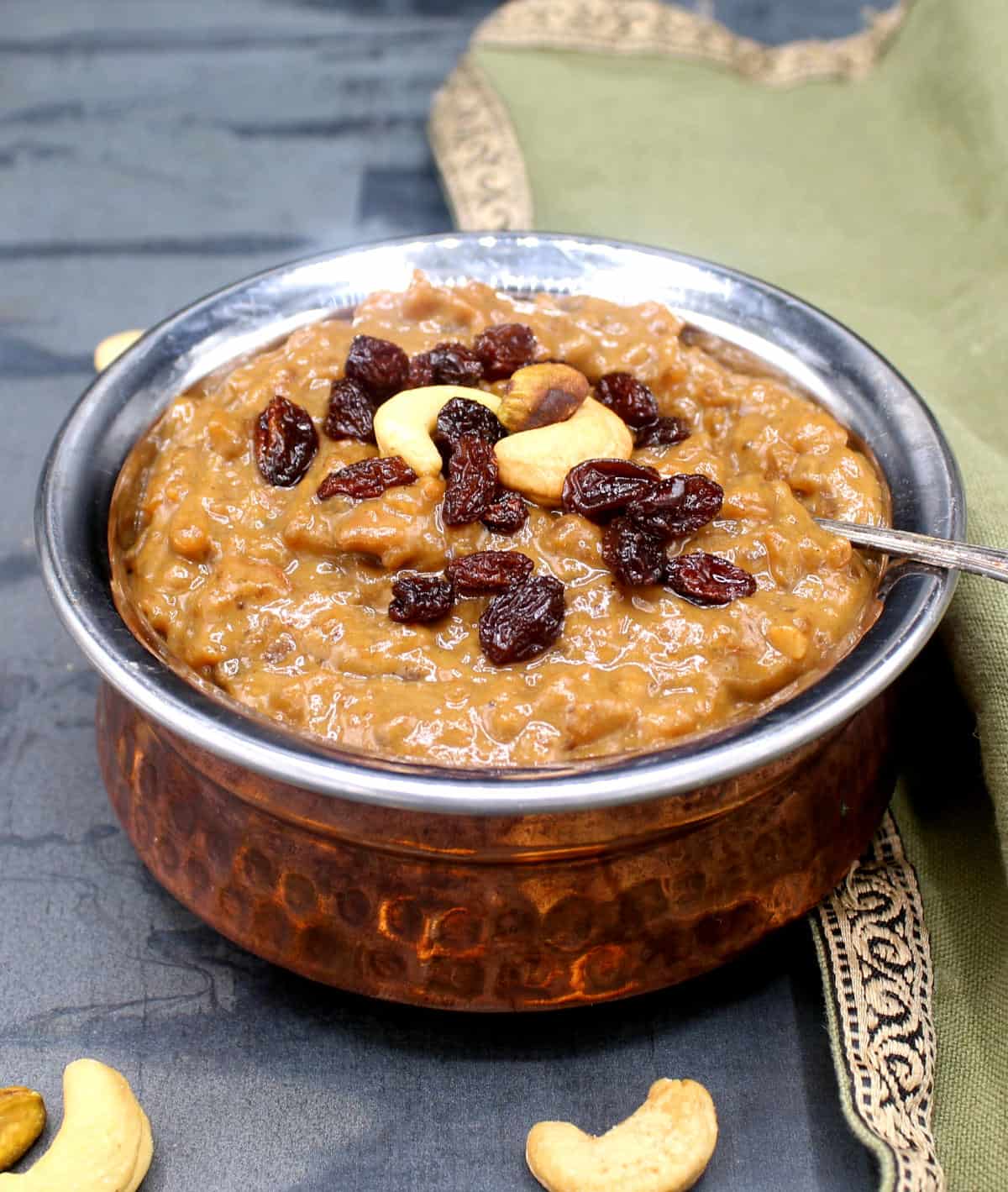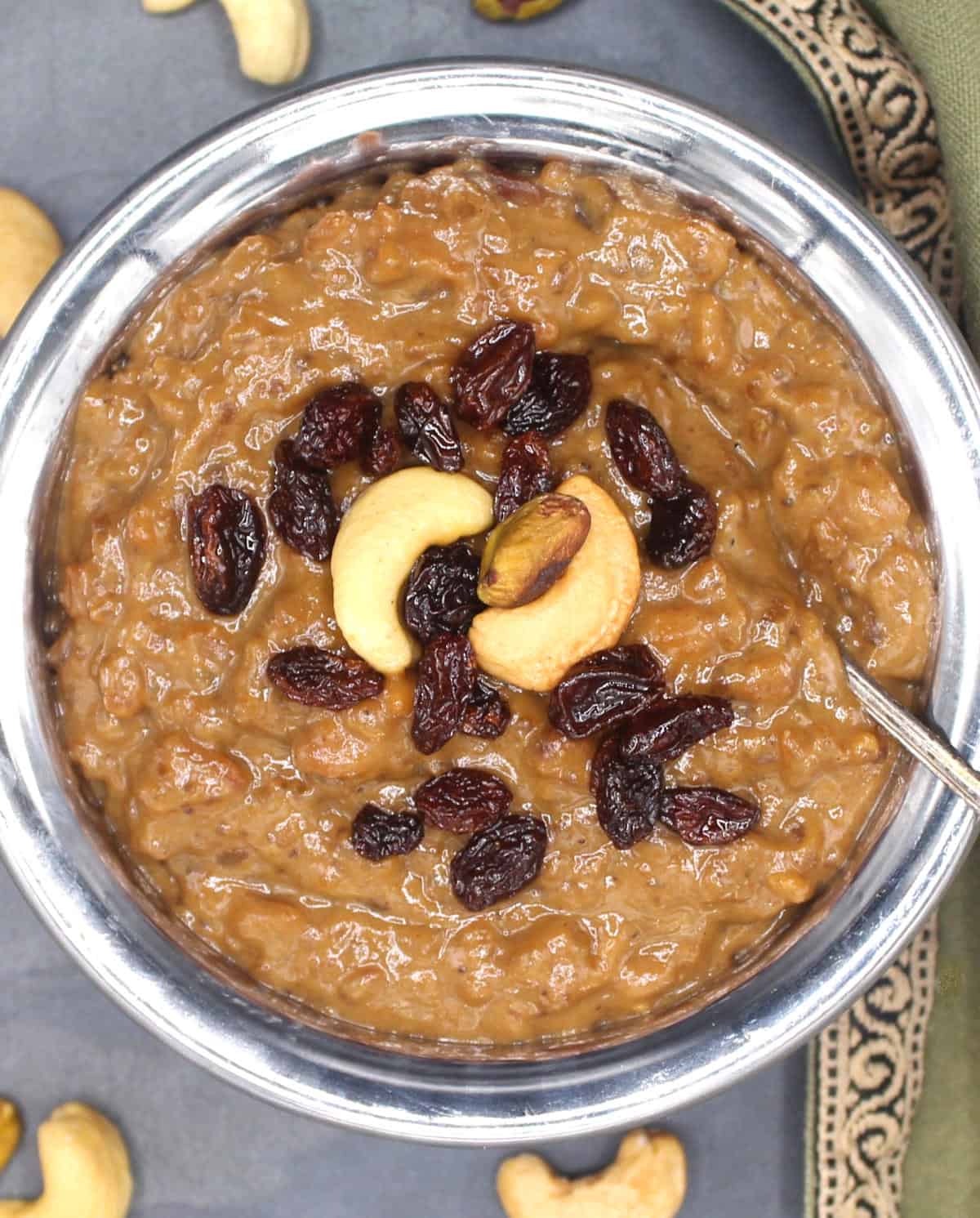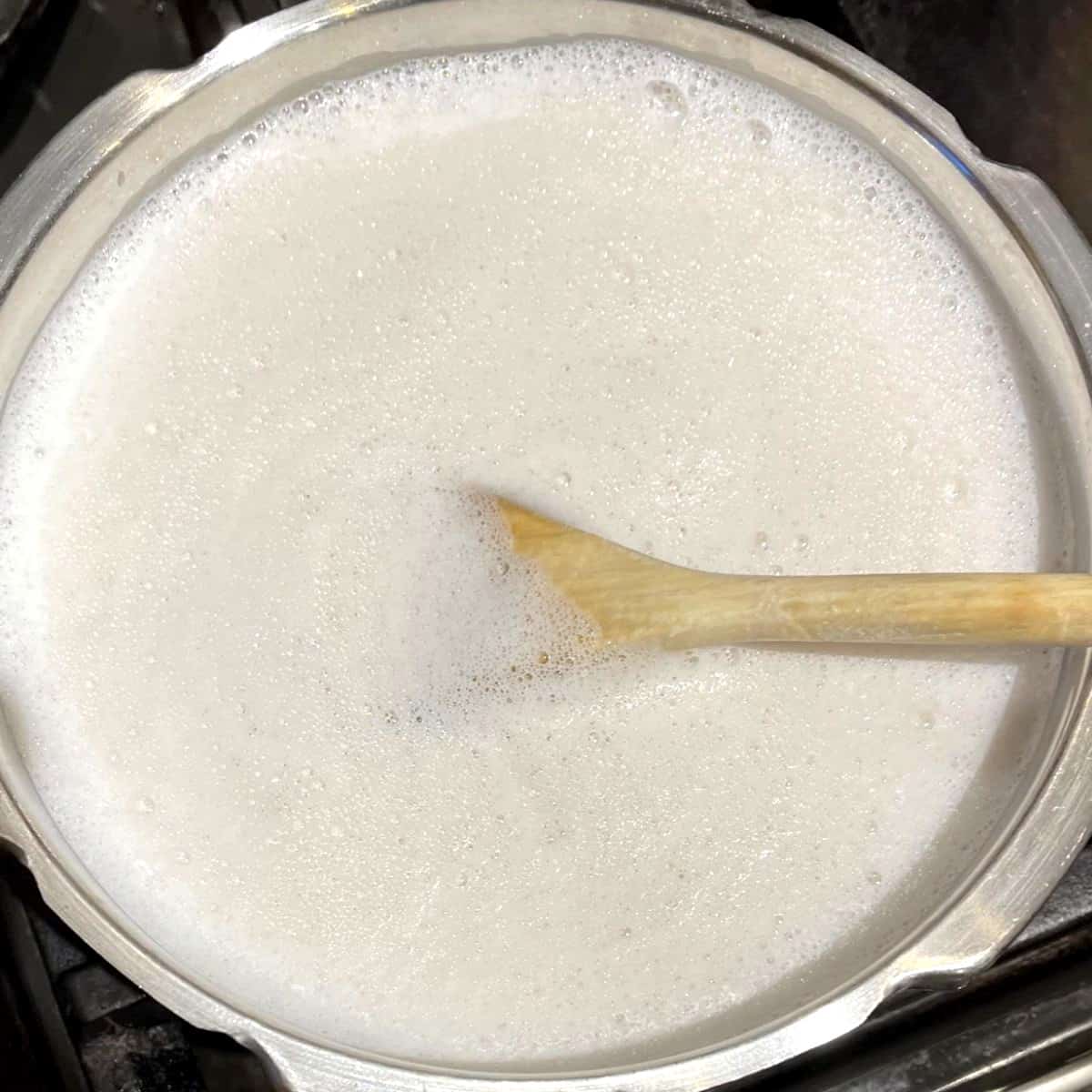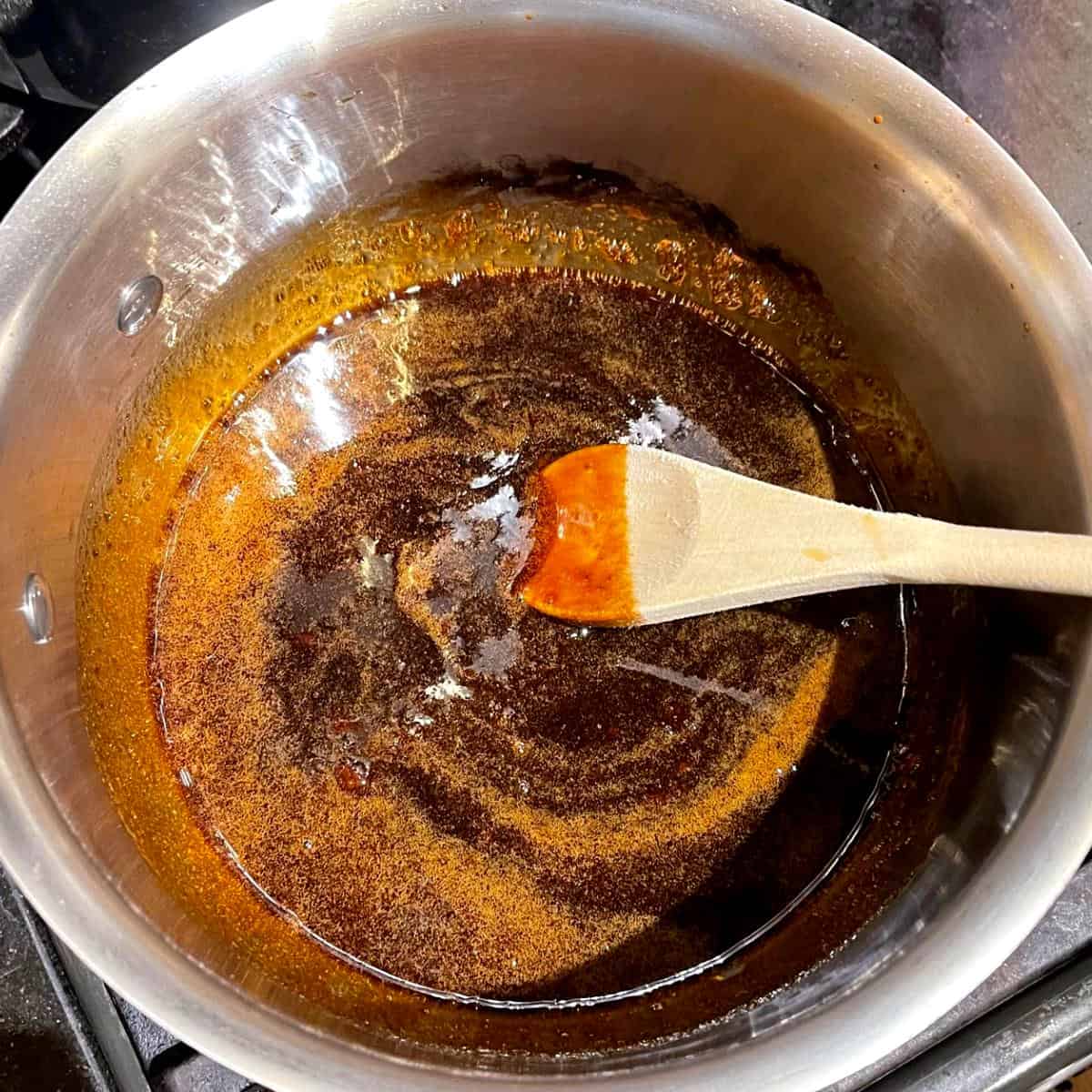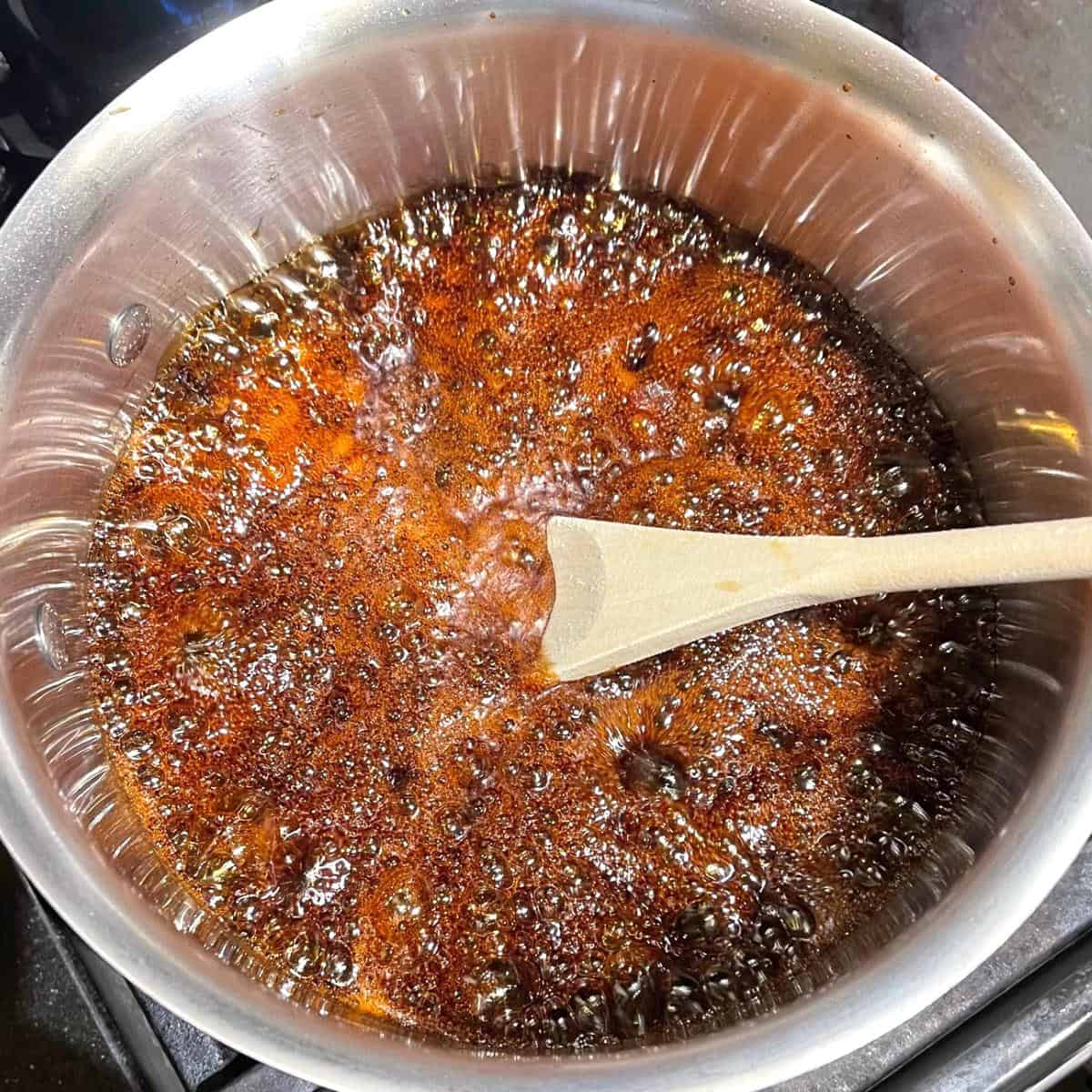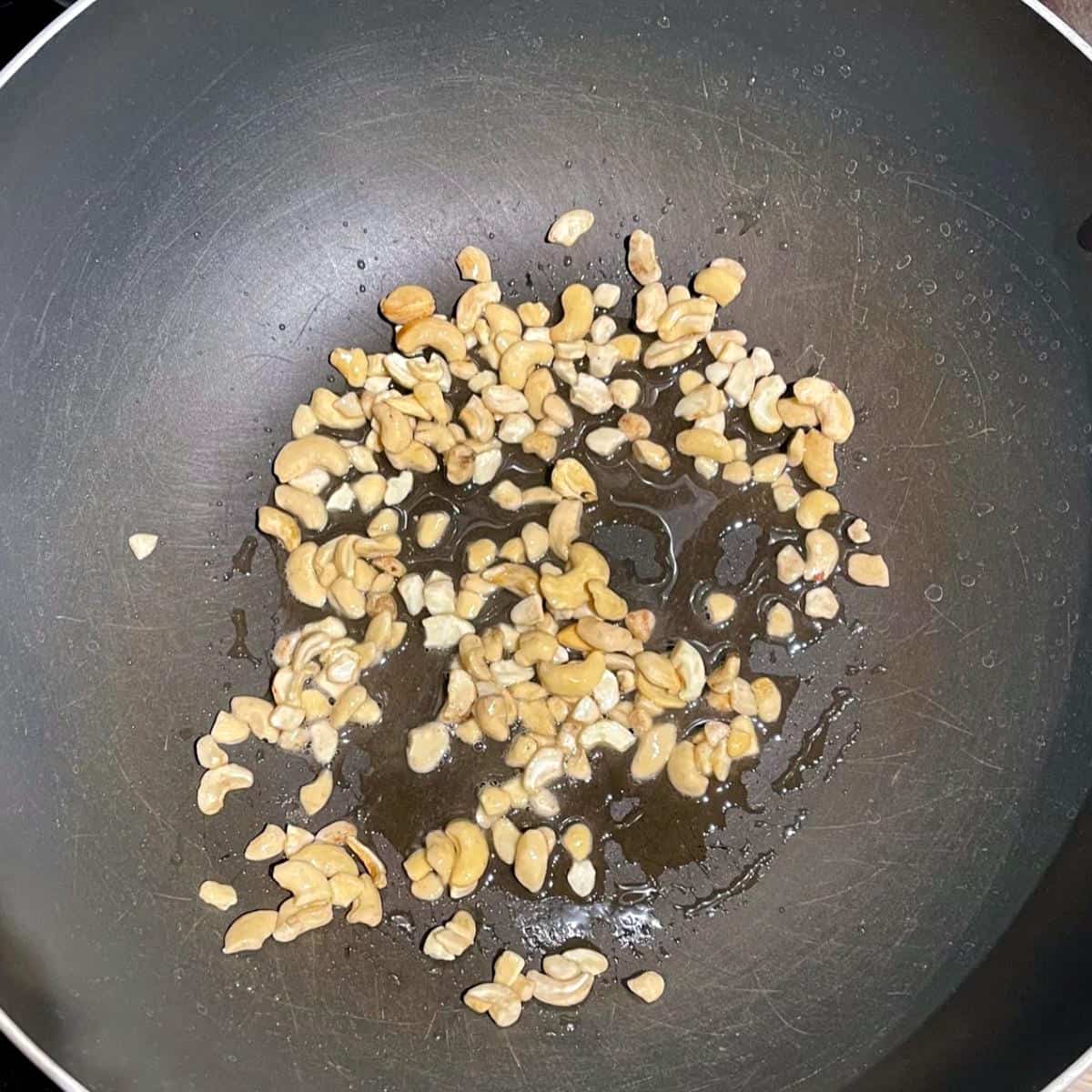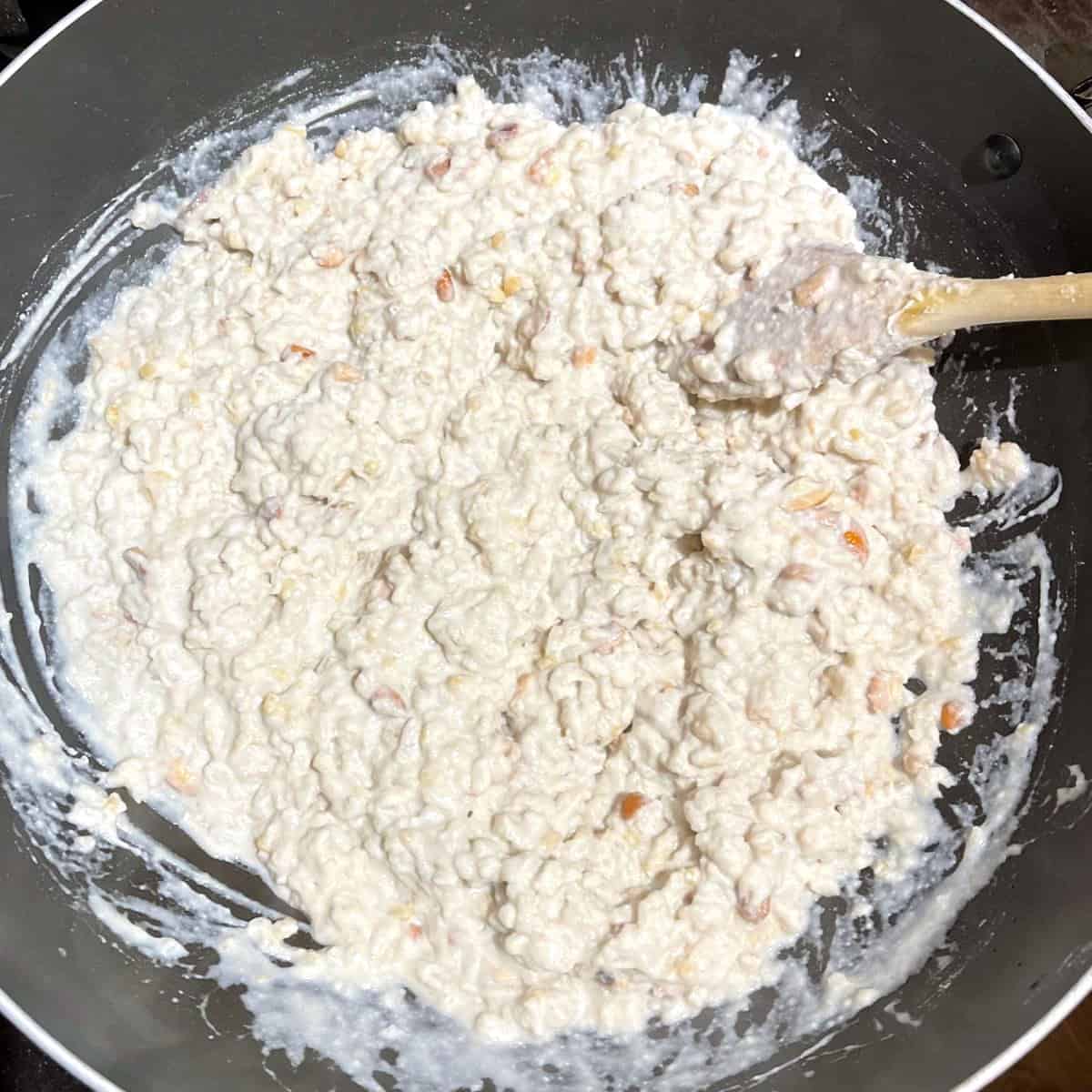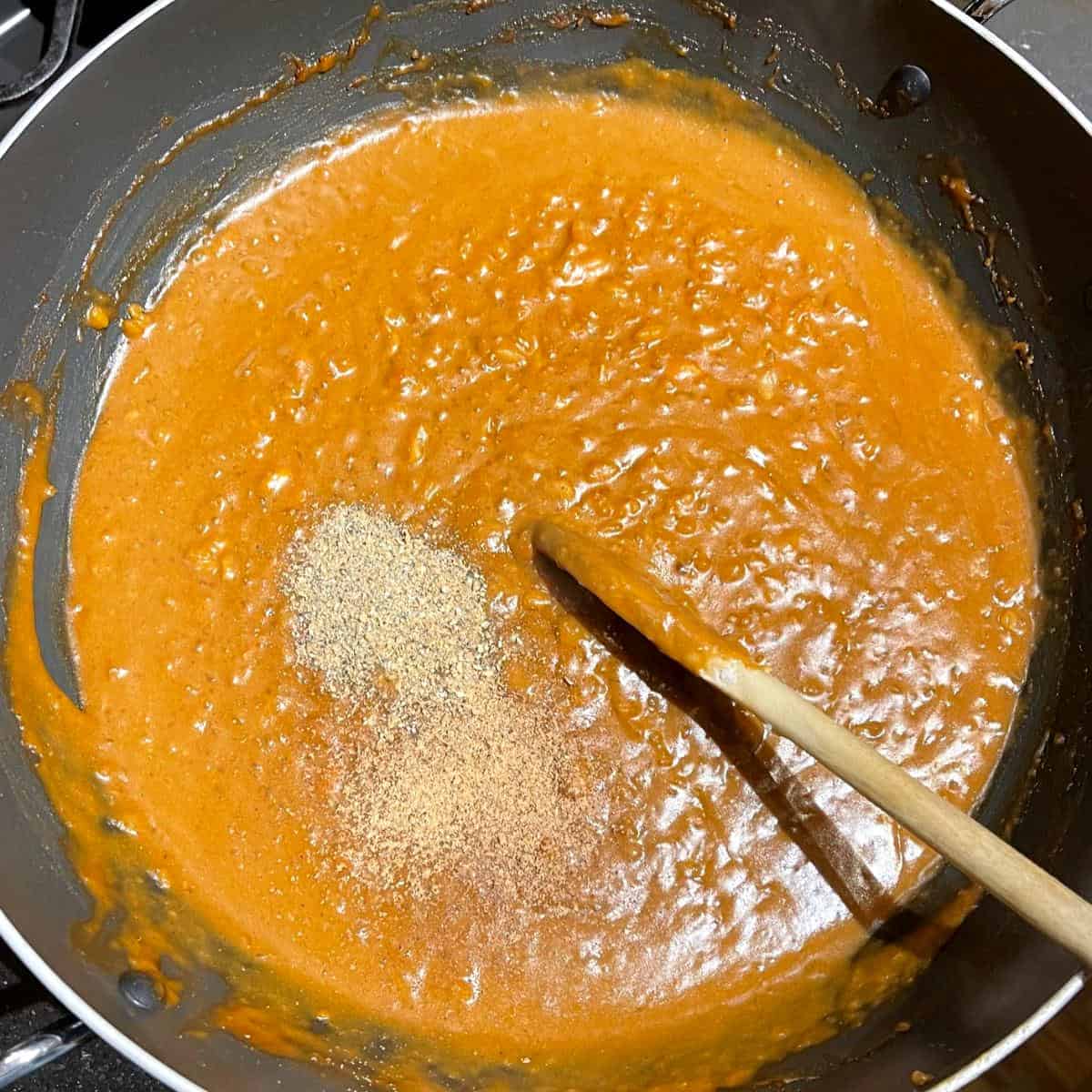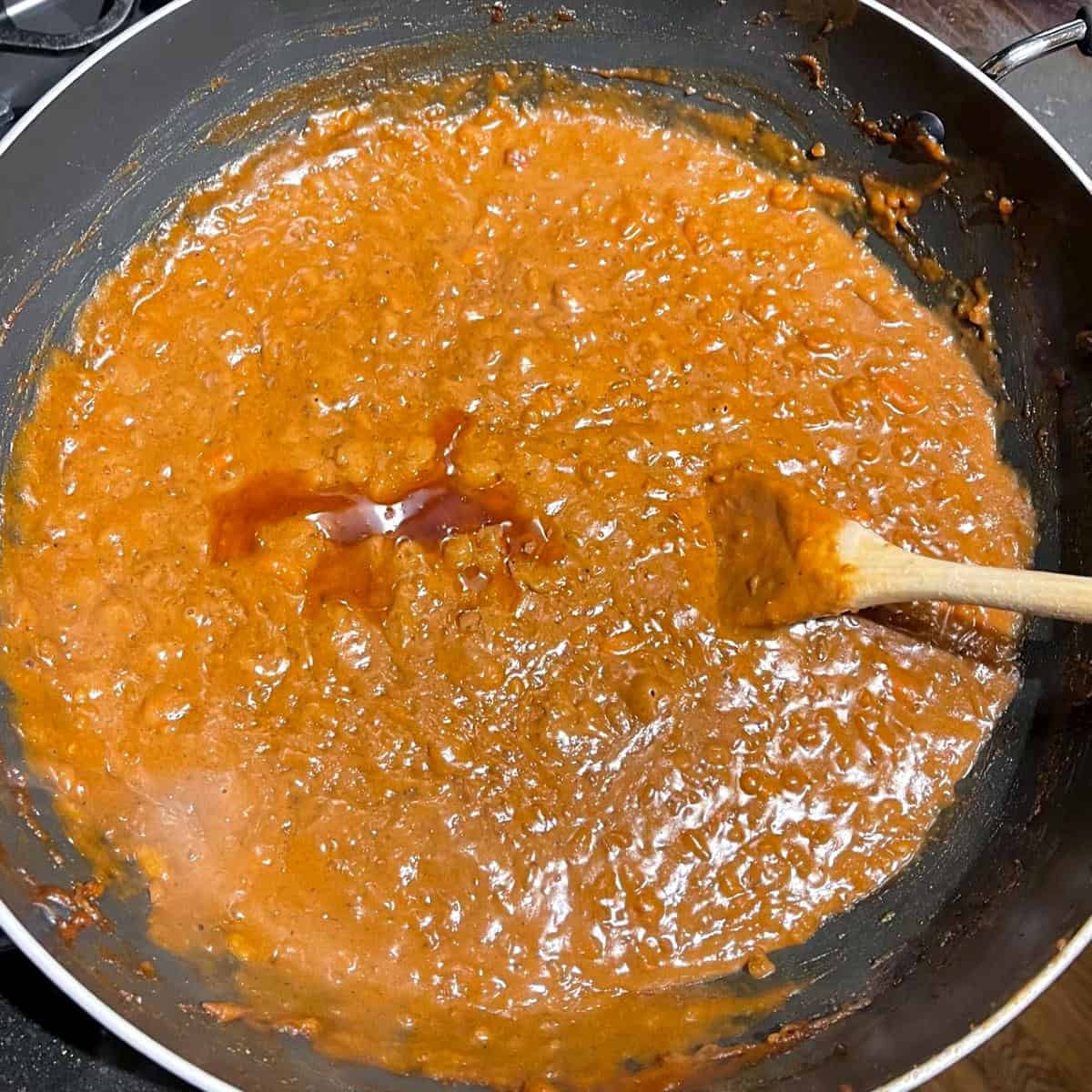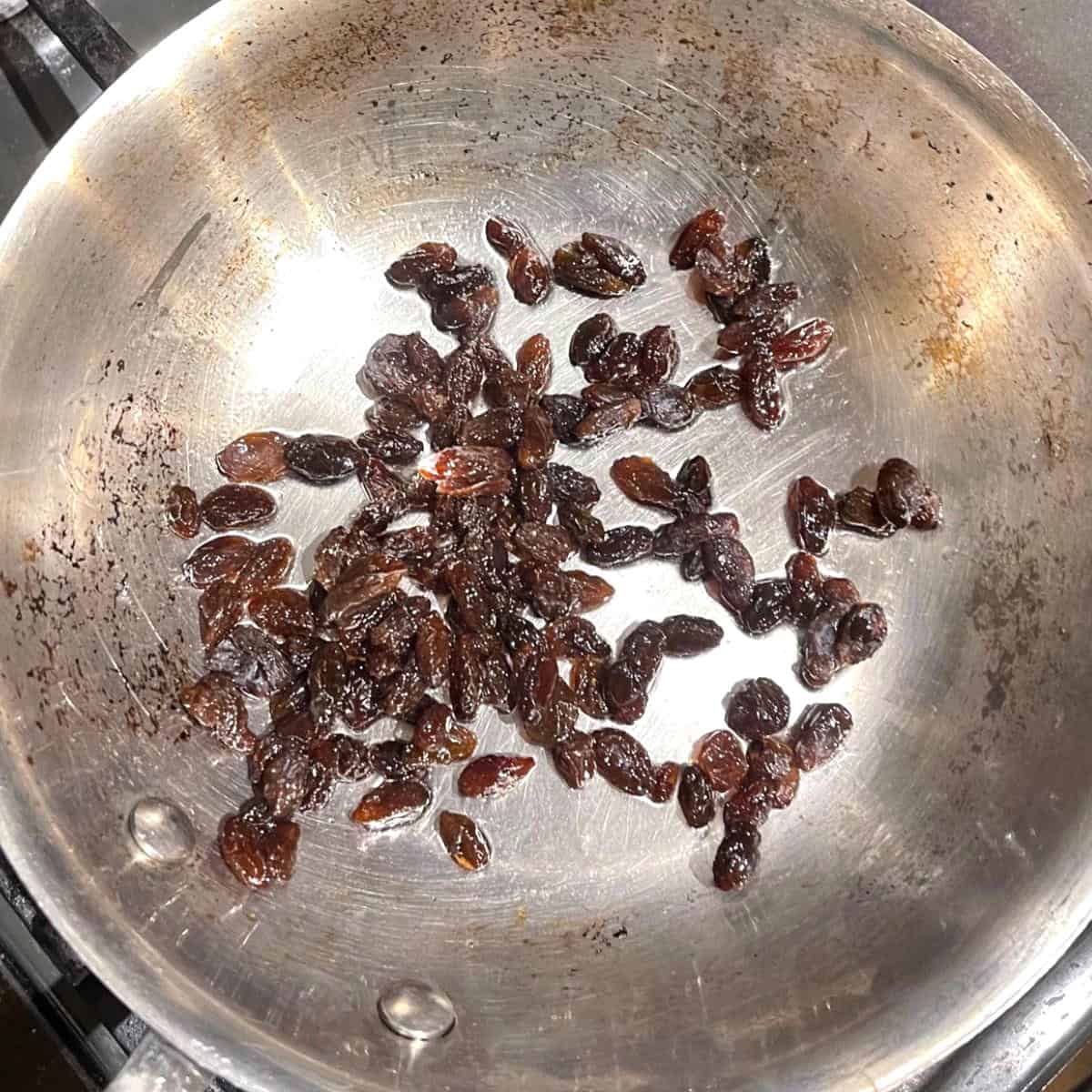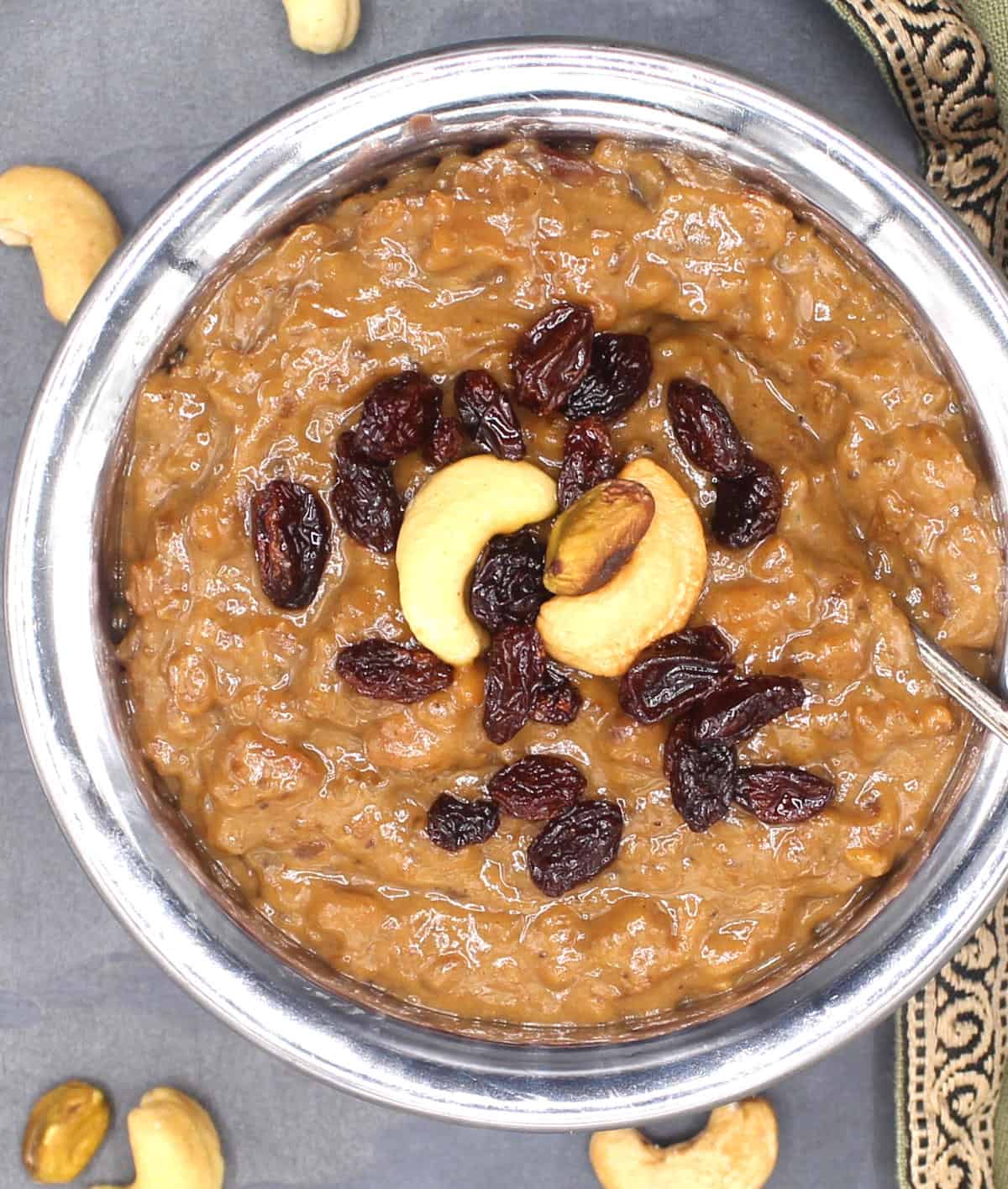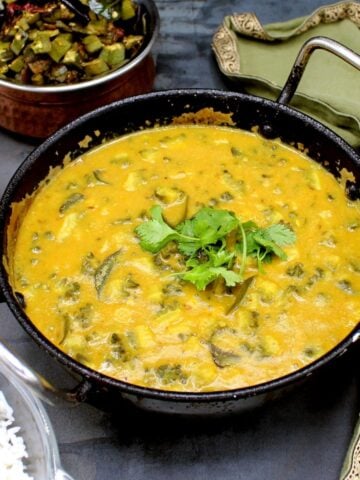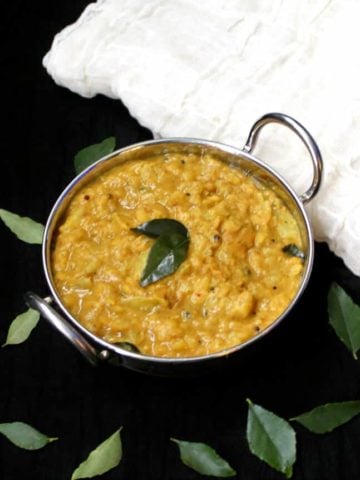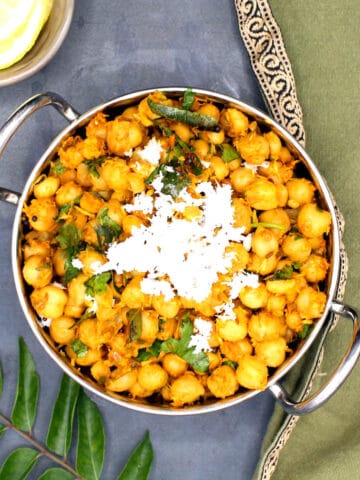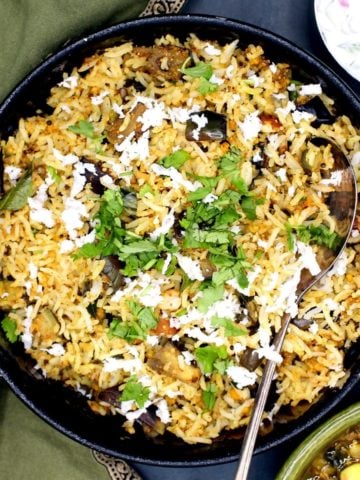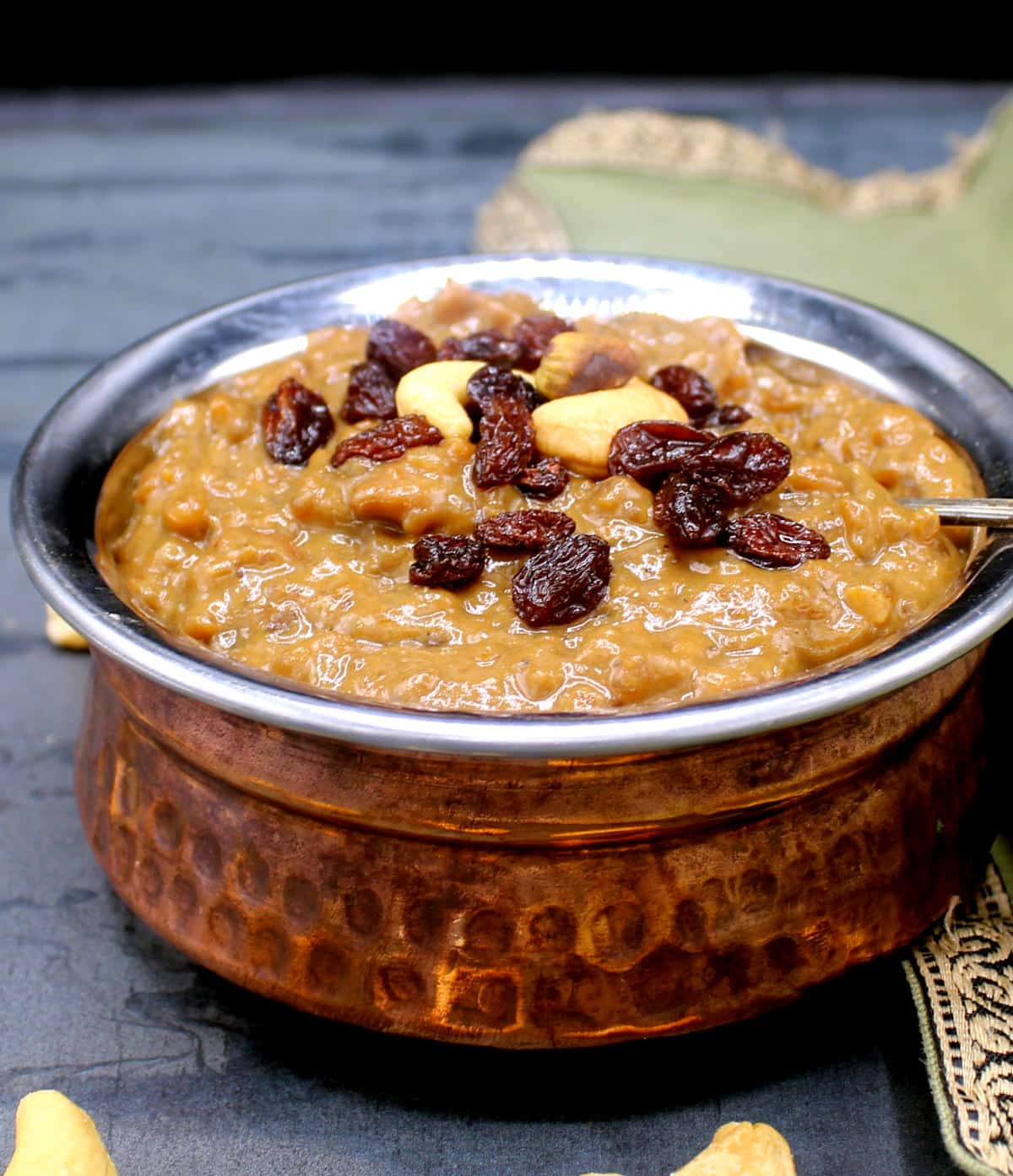You might also like these recipes for vegan kheer and vegan phirni.
What is pongal?
The passing of the winter solstice kicks off India’s legendary love for celebrations. Farmers, and everyone else, give their thanks for the end of the harvest with festivals that go by different names across different states: makar sankranti, lohri and bhogali bihu, among others. Residents of the state of Tamil Nadu, in south India, celebrate the end of the harvest with a festival named pongal. And to give thanks, they cook up two very special dishes with lentils and the newly harvested rice: ven pongal, or savory pongal, and sakkarai pongal, or sweet pongal. “Ponga,” in Tamil, means to overflow, and cooking pongal after the harvest signifies prosperity and abundance. In south Indian homes, cooks heat milk and rice for pongal in a clay pot and let it boil over in symbolic celebration as cries of “Pongalo, pongal!” ring out. My husband, Desi, is Tamil and although he couldn’t be bothered with symbolisms and celebrating anything, we do celebrate great food. And pongal certainly is that. To make sakkarai pongal you need just a few ingredients, with the chief ones being rice, moong dal (yellow mung lentils) and jaggery, an unrefined sugar made with palm sap or sugarcane juice. There is one more ingredient that is always touted as a must for pongal because it doesn’t just act as a cooking medium, but as a powerful flavoring agent: ghee. Most cooks use as much as a cup of ghee in a sakkarai pongal recipe, turning what could be a healthy-ish treat into an unhealthy indulgence. On Holy Cow Vegan we don’t use ghee because we love cows. In the early years of this blog I came up with a ghee-free vegan sweet pongal that tastes amazing. I’ve since made quite a few changes to that recipe to make it even yummier and more authentic-tasting, while still keeping it free of any dairy products. Try it, and I am sure you’ll agree!
Why you will love this sakkarai pongal recipe
Dairy-free but delicious. There is no milk nor ghee in this recipe, but our cruelty-free pongal is just as yummy as the other version. Simple, with just a handful of pantry ingredients needed. If you are an Indian cook or have a well-stocked pantry of Indian ingredients, you can likely make this sweet pongal with what you already have on hand. Or you can easily buy them online or at an Indian grocery store. Everyone-friendly. The sweet pongal is gluten-free, dairy-free and vegan. If you are nut-free, just leave out the cashews and garnish instead with pumpkin seeds.
Variations for special diets
Nut-free: Use pumpkin seeds instead of cashews, and oat milk or soy milk instead of cashew milk. Low-oil: There are just two tablespoons and a teaspoon of oil in this recipe, which is really not much for a dish like this. But if you want to cut down on the oil further use a teaspoon of oil each to fry the moong dal and rice in step 1 and to roast the cashews in step 5, cutting the oil down to just three teaspoons total. I would not recommend making this dish oil-free.
How to make sweet pongal
Store
Refrigerate: Store sakkarai pongal in the fridge for up to four days. Freeze: Freeze the pongal in an airtight container or freezer-safe container for up to four months. Reheat: Thaw and reheat the pongal in a saucepan or in the microwave. If needed add a bit of milk or water to return it to a pudding-like consistency.
More delicious Tamil recipes
Recipe card
Use the correct proportions of ingredients. Use a dal to rice ratio of 1:4 and a rice to jaggery ratio of 1:2 by volume. In this recipe we will use one-fourth of a cup of moong dal, one cup of rice and two cups of jaggery. Cook with a short-grain rice or medium-grain rice. The consistency of the perfect sweet pongal should be soft, viscous and glutinous and you should hardly be able to discern the rice and lentils. Think risotto, not biryani. For the right consistency, use a starchy rice. Cook the rice and lentils in milk. I use cashew milk or oat milk. When the rice and lentils cook in milk they become silkier and more flavorful. The rice and lentils need to be cooked until they are very soft. You can pressure-cook the rice and moong dal in a stove top pressure cooker or an Instant Pot or a rice cooker. Or, if you don’t have any of these, use a heavy saucepan with a tight lid. The rice and lentils should literally be melting in the milk when you turn off the heat. Cook the jaggery thoroughly. Because jaggery is an unrefined sugar it has a raw flavor. Before adding it to sweet dishes it is best to cook the jaggery thoroughly. I’ll show you how, but don’t be tempted to cut the process short if you want the best flavor. Take your time. Once you put the lentils and rice together with the jaggery, take 10-15 minutes to cook them together to allow the flavors to meld.
Check to get new recipe updates by email.
